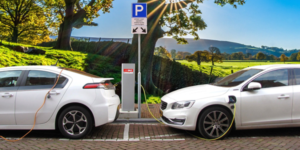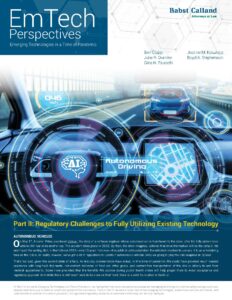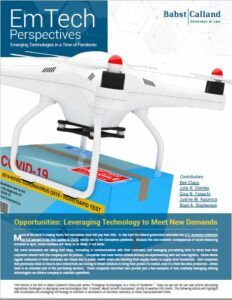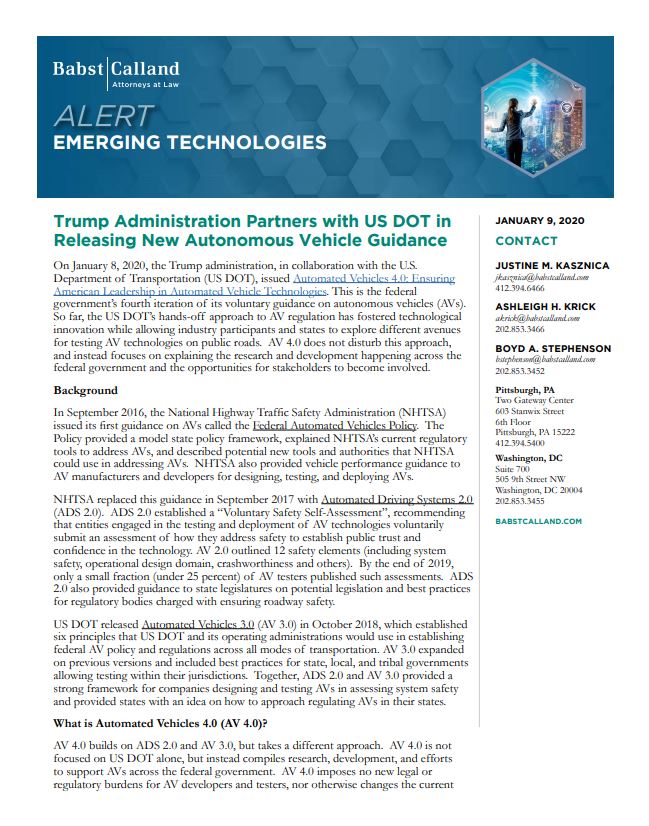On August 5, 2021, President Biden signed an Executive Order on Strengthening American Leadership in Clean Cars and Trucks (Executive Order). The White House signing event included American automakers Ford, GM, and Stellantis, as well as the United Auto Workers (UAW), demonstrating support for the president’s Build Back Better agenda and investment in U.S. leadership in electric vehicles and batteries, manufacturing, and jobs. In conjunction with the signing of this Executive Order, the United States Environmental Protection Agency (USEPA) and United States Department of Transportation (USDOT) announced coordinated notices of proposed rulemaking that are intended to roll back the previous administration’s emissions and fuel economy regulations.
Please read more about this reporting requirement in this Alert.
The United States is experiencing a wave of state-led clean transportation initiatives that are gaining substantial momentum. Faced with insufficient federal action, states started focusing their efforts on the sector that produces the largest percentage of greenhouse gas: transportation. On November 10, 2020, the Environmental Law Institute and Babst Calland co-hosted a webinar that explored these initiatives, their potential impact, and funding sources. Click here for a transcript of the discussion, which has been edited for style, clarity, and space considerations.
On January 15, 2020, the California Air Resources Board (CARB) announced the opening of the reporting system for the Large Entity One-Time Reporting Requirement for vehicle fleet owners. This reporting requirement was passed by CARB as part of its June 2020 adoption of the Clean Trucks Rule. As the California Office of Administrative Law (OAL) has not yet approved the regulation, businesses may voluntarily provide information at this time if they wish to begin the reporting process ahead of the April 1, 2021 deadline.
Please read more about this reporting requirement in this Alert.
 On November 10th, two Babst Calland attorneys, Julie Domike and Gina Falaschi, will participate in an Environmental Law Institute (ELI) and Babst Calland co-sponsored webinar entitled “State Clean Transportation Initiatives: Stepping Towards Success for High EV Adoption.” They will be joined by Colorado State Senator Chris Hansen, Jim Chen, Vice President of Public Policy at Rivian, and Matt Nelson, Director of Government Affairs at Electrify America, in a discussion of 2020’s most important state-led clean transportation initiatives, their goals and impacts, as well as funding sources for such efforts. The panel will also explore the partnership that state and local governments can forge with industry to facilitate high electric vehicle penetration, charging and grid infrastructure, and direct sales to consumers.
On November 10th, two Babst Calland attorneys, Julie Domike and Gina Falaschi, will participate in an Environmental Law Institute (ELI) and Babst Calland co-sponsored webinar entitled “State Clean Transportation Initiatives: Stepping Towards Success for High EV Adoption.” They will be joined by Colorado State Senator Chris Hansen, Jim Chen, Vice President of Public Policy at Rivian, and Matt Nelson, Director of Government Affairs at Electrify America, in a discussion of 2020’s most important state-led clean transportation initiatives, their goals and impacts, as well as funding sources for such efforts. The panel will also explore the partnership that state and local governments can forge with industry to facilitate high electric vehicle penetration, charging and grid infrastructure, and direct sales to consumers.
The event is open to the public (there is a $50 fee for those who are not members of ELI; Press/Full-Time Students, $0); registration is required by November 6 through the ELI Website.
 Regulatory Challenges to Fully Utilizing Existing Technology
Regulatory Challenges to Fully Utilizing Existing Technology
On May 1st, Amazon Prime premiered Upload, the story of a software engineer whose consciousness is transferred to the cloud after his fully autonomous vehicle (AV) rear-ends another car. The accident takes place in 2033. By then, the show imagines, vehicles that drive themselves will be the default. We won’t spoil the ending. But, in the fictional 2033 only 13 years from now—the public is astounded when the vehicle is involved in a wreck. It is an entertaining take on the future. In reality, however, we’ve got a lot of regulations to update if autonomous vehicles (AVs) are going to play the role imagined in Upload.
Read More.
Tags: Autonomous Vehicles,
Coronavirus,
COVID-19,
Drones,
Efficiency,
Emerging Technology,
Industry News,
Innovation,
Mobility,
Pandemic,
Robotics,
Tech Industry,
Technology,
Transportation

Opportunities: Leveraging Technology to Meet New Demands
Most of the world is staying home, but businesses must still pay their bills. In late April the federal government estimated the U.S. economy contracted by 4.8 percent in the first quarter of 2020, mostly due to the Coronavirus pandemic. Because the real economic consequences of social distancing occurred in April, future numbers will likely be as bleak, if not worse.
Yet, some businesses are taking bold steps, innovating in communications with their customers, and leveraging pre-existing tools to retool how their customers interact with the company and its product. Companies that never before offered delivery are experimenting with last mile logistics. Farms whose regular restaurant or hotel customers are closed due to public health orders are retooling their supply chains to supply local households. And companies that previously relied on face-to-face interactions are turning to virtual solutions to bring their product to market, even in a field like wine production—where taste is an essential part of the purchasing decision. These companies described here provide just a few examples of how creatively leveraging existing technologies can allow a company to maintain operations.
Read More.
Tags: Commercial,
Coronavirus,
Corporate Law,
COVID-19,
Drones,
Efficiency,
Emerging,
Emerging Technology,
Industry News,
Innovation,
Last Mile Logistics,
Logistics,
Mobility,
Pandemic,
Regulations,
Regulatory,
Remote Learning,
Robotics,
Robots,
Supply Chain,
Tech Industry,
Technology,
Transportation,
US DOT
The trucking industry is still adjusting to the final transition to electronic logging devices (ELDs). Some relief may be on the horizon, however, as federal regulators consider whether to relax the hours of service requirements.
“Every solution has unintended consequences, and that is exactly what we are seeing now,” says Boyd A. Stephenson, associate at Babst Calland. “The supply chain is like a balloon, where everything is interconnected. You push on one part and another piece will pop out.”
Paper logbooks are left to the discretion of the driver, while ELDs record driving time automatically to ensure driving hours are strictly followed. The idea is to make the roads safer. Effective now, strict enforcement of the ELD mandate applies to all drivers, unless they operate under the short-haul rule exemption.
The trucking industry is dealing with rising transportation costs and an overall driver shortage in an economic expansion. Freight volumes also grew more slowly in 2019, with trade conflicts and tariff increases taking a toll on growth.
An American Transportation Research Institute survey found that the top industry concerns for 2019 were driver shortages, hours of service, driver compensation and detention or delays at customer facilities. These obstacles increase trucking costs, which get passed on to shippers that need their goods transported.
Smart Business spoke with Stephenson about hours of service rules and other industry changes that businesses should be aware of in 2020.
Read More.
 On January 8, 2020, the Trump administration, in collaboration with the U.S. Department of Transportation (US DOT), issued Automated Vehicles 4.0: Ensuring American Leadership in Automated Vehicle Technologies. This is the federal government’s fourth iteration of its voluntary guidance on autonomous vehicles (AVs). So far, the US DOT’s hands-off approach to AV regulation has allowed for technological innovation while allowing industry participants and states to explore different avenues for testing AV technologies on public roads. AV 4.0 does not disturb this approach, and instead focuses on explaining the research and development happening across the federal government and the opportunities for stakeholders to become involved.
On January 8, 2020, the Trump administration, in collaboration with the U.S. Department of Transportation (US DOT), issued Automated Vehicles 4.0: Ensuring American Leadership in Automated Vehicle Technologies. This is the federal government’s fourth iteration of its voluntary guidance on autonomous vehicles (AVs). So far, the US DOT’s hands-off approach to AV regulation has allowed for technological innovation while allowing industry participants and states to explore different avenues for testing AV technologies on public roads. AV 4.0 does not disturb this approach, and instead focuses on explaining the research and development happening across the federal government and the opportunities for stakeholders to become involved.
Read More.
 On November 10th, two Babst Calland attorneys,
On November 10th, two Babst Calland attorneys, 

